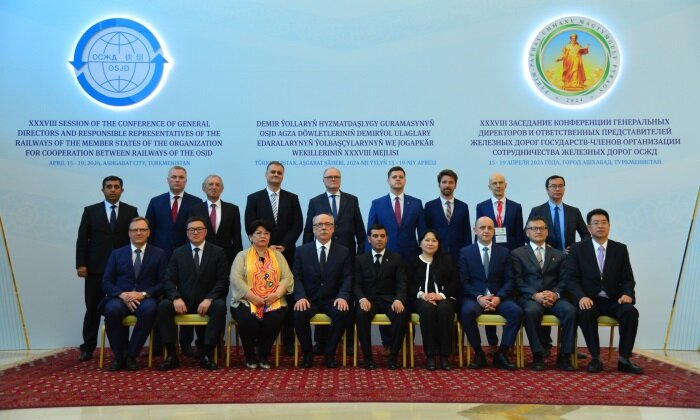The implementation of the state program on energy saving for 2018-2024 provides for an increase in the role of renewable energy sources.
 Scientific expert of CentralAsia.news, a well-known Turkmen scientist, Doctor of Technical Sciences Allaberdy Ilyasov spoke about the role and significance of forcing technologies based on non-traditional alternative energy sources.
Scientific expert of CentralAsia.news, a well-known Turkmen scientist, Doctor of Technical Sciences Allaberdy Ilyasov spoke about the role and significance of forcing technologies based on non-traditional alternative energy sources.
The energy of the future
When non-renewable primary energy sources are depleted, energy security will become one of the most important factors in the independent existence of countries. The main condition for such security is not only the expansion and modernization of the fuel and energy complex but also the very energy-saving, determined by the culture of energy consumption of the entire population.
Renewable energy is gaining increasing attention today. It is obtained from sustainable sources such as hydropower, wind power, solar power, geothermal power, biomass, tidal power. Unlike fossil fuels — oil, natural gas, coal, these energy sources are not depleted, therefore they are called renewable. A renewable managed energy system offers a range of social and economic benefits, including jobs.
Potential prospects promise new models of socio-economic development. The change in global investment focus will increase the number of renewable energy jobs to 42 million by 2050, four times more than currently. The total number of jobs in the energy sector will reach 100 million.
And now, when humanity has started to seriously think about not only economic but also environmental benefits, the use of alternative energy has become quite widespread. Its consumption is one of the important factors in the development of the economy and the standard of living of people. Over the past 140 years, energy consumption around the world has increased by about 20 times, and the world’s population has increased by 4 times.
Transformation of the hydrocarbon economy into a renewable one
Many states are already taking decisive steps to use it widely. For example, Germany now provides at least 5 percent of its needs through the use of wind power. Denmark, China, Spain, and India almost completely cover their energy needs using wind power. In Brazil, all trucks are now converted to biomass-derived ethanol. In Austria, thousands of office buildings are heated by the heat of the earth.
These and other advances in the use of renewable energy sources on an industrial scale are impressive.
Countries around the world have set themselves ambitious targets for the transition to renewable energy. The targets are also part of the Paris Agreement, which targets zero-carbon solutions by 2030 to compete in sectors that account for more than 70% of global emissions. This will be possible due to energy transformation — the process of replacing the hydrocarbon economy with renewable energy. Indeed, over the past decade, energy-related carbon dioxide emissions have increased by 1% per year.
At the present stage of energy development, it is no longer enough to consider its interaction with the environment at the level of individual local influences. With the existing scale of development based on already mastered technologies, the main impacts of the energy sector will inevitably spread to large regions of the planet.
A reasonable balance of energy and ecology
Energy and the fuel and energy complex realizing its functional purpose are the basis for the existence and development of civilization. At the same time, it is concentrating huge material resources, processing colossal fuel and energy resources, and actively invading the hydro, litho, and atmosphere. Energy can change the natural environment.
If earlier the world community thought about the possibilities of a stable and reliable energy supply for its existence, now the main problem is a reasonable balance of energy and ecology.
The energy potential of alternative sources is enormous, but their widespread use is associated with significant technical difficulties, economic constraints, and increased requirements for environmental safety. It is not surprising that many developed countries of the West, the USA, Germany, Japan, Italy, and others, are intensively searching and developing new technologies based on the use of non-traditional, renewable energy sources.
In the world, the fuel and energy complex accounts for up to half of all emissions of pollutants into the atmosphere from stationary sources and more than 15% of discharges of polluted wastewater. The power industry consumes approximately 70% of industrial water. Most of the air pollution in large cities comes from transport that burns oil refined products. The development of discovered, the cheapest deposits leads to land degradation in huge areas.
The tasks of developing the energy sector and preserving the quality of the environment are in objective contradiction. The impact of traditional energy on nature conservation objects is visible in all geospheres of the Earth and manifests itself in changes in the structure and landscapes of the lithosphere.
Humanity must stop greenhouse gas emissions by 2100
Renewable energy sources have an undeniable advantage. It is their inexhaustibility and ecological purity.
A person can use them without any fear because they do not upset the energy balance of the planet. Plus, renewable resources are everywhere around it. Therefore, from the point of view of rational nature management and environmental safety, it is important to search for alternative eco-saving technologies and options for solving energy problems.
At the same time, several measures are envisaged to minimize the impact on the natural environment.
According to the forecasts of UN experts, humanity should reduce emissions of greenhouse gases into the atmosphere by 70% by the middle of the century and completely stop it by 2100. Only then widespread drought, extinction, and catastrophic consequences can be avoided. Therefore, scientists are looking for efficient, renewable, and clean energy sources.
Turkmenistan is a party to the Paris Agreement
The implementation of the State Program of Turkmenistan on Energy Saving for 2018-2024 provides for an increase in the role of alternative energy sources. Turkmenistan, due to its climatic conditions, has a colossal reserve of alternative, renewable energy sources, and above all — the energy of the sun. The sun is an almost inexhaustible source of energy on an unlimited scale, and the annual sunshine in the country is more than 300 days.
Solar power plants and solar collectors use the energy of the luminous flux, which naturally enters the photovoltaic cells and is converted into electrical or thermal energy to heat the liquid. The main plus is environmental friendliness and the complete absence of harmful emissions into the atmosphere. Thus, the increase in the use of solar energy will have a beneficial effect on the environmental situation, which will be one of the key steps in the implementation of the Paris Agreement on Climate signed by Turkmenistan in September 2016.
Environmental safety comes first
The environmental activity of Turkmenistan in the fuel and energy complex and the oil and gas industry consists of the construction of environmental facilities, including facilities for the protection of atmospheric air, neutralization, and disposal of waste. Prevention of climate change, monitoring of components of the natural environment and control of the operation of production facilities, ensuring the environmental safety of oil and gas production facilities and pipelines are also included.
Efforts to preserve the environment have become today a significant factor in the economic growth of the country, the basis for the transition to a fundamentally new model of environmental management.
For example, at the Turkmenbashi complex of oil refineries, a complex of delayed coking and tar deasphalting units is being built. It is designed for processing all heavy residues — tar, oil sludge, and others into more valuable light oil products into gasoline and diesel fuels. The construction of a super ecological plant for the production of needle coke in the future is considered.
Control over the state of the environment and its assessment allows timely identification of negative changes that occur under the influence of anthropogenic and natural factors. Biodiversity conservation is one of the key areas and an integral part of the environmental policy of the head of state.
It is nature conservation that requires a holistic view of the natural environment. Therefore, in Turkmenistan, the rational use of natural gas and oil, an increase in the use of alternative energy sources are the priorities of the development strategy of President Gurbanguly Berdimuhamedov.





